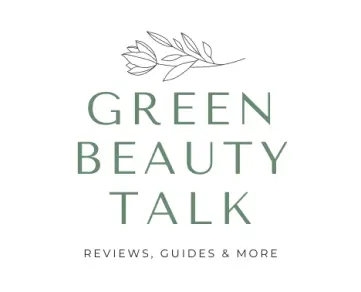The use of alpha hydroxy actives in skincare goes beyond simple exfoliation. These can also provide benefits in dealing with discoloration issues like hyperpigmentation and inflammatory disorders like acne. As such it is important to know how each acts to know which will be best suited for you. In this article, you will learn the difference between mandelic and glycolic acids and how to include them in your routine.
What is Mandelic Acid?
Mandelic acid is an AHA that is naturally derived from bitter almonds. However, for more sustainable production, a synthetic form of this molecule is used in the skincare and pharmaceutical industries.
Compared to other acids in this category, it is lipophilic, therefore, penetrates the pores more easily. This exfoliating acid is the most gentle AHA due to its larger molecular weight meaning that it penetrates the skin more slowly.
Benefits of mandelic acid
- Exfoliates the skin
The principal benefit of mandelic acid is in its gentle exfoliating property. Mandelic acid helps loosen the bonds between old skin cells present on the skin and sheds them off.
- Brightens the skin
After exfoliation the skin appears younger and brighter, mandelic acid helps maintain skin brightness and strengthen the skin by boosting collagen production.
- Fades hyperpigmentation
Mandelic acid has tyrosinase inhibitory properties that help fade discoloration on the skin. In this study, patients with melasma saw a 50% improvement rate after applying a 10% mandelic acid solution for 1 month.
- Reduces signs of ageing
Due to its ability to boost collagen production and the skin’s viscoelasticity, mandelic acid is able to improve skin texture and reduces the appearance of fine lines and wrinkles on the skin.
- Is anti-bacterial and anti-fungal
Mandelic acid has been proven to have both antibacterial and antifungal effects against both gram-positive and gram-negative forms of bacteria which makes it stand out from other skincare actives. This makes it a great ingredient to treat bacterial infections like acne and fungal folliculitis.
What is Glycolic Acid?
Glycolic acid is also an exfoliating acid used to loosen the bond of older skin cells on the outermost layer of the skin. This acid is naturally derived from sugarcane and is the most commonly used AHA.
Among all AHAs glycolic acid has the smallest molecular weight which means it can penetrate the outermost layer of the skin faster and act more effectively. The only downside is that due to its potent exfoliating properties its irritancy level is higher.
Benefits of glycolic acid
- It exfoliates the skin
This acid is the strongest exfoliating acid of the AHA family and helps reveal smoother and brighter skin. Glycolic acid penetrates the skin and helps unclog pores which is beneficial particularly for people with acne-prone skin.
- It slows down signs of ageing
Fine lines and wrinkles appear on the skin the older we get and the more the skin gets exposed to free radicals. Glycolic acid helps slow down the appearance of these signs by boosting the production of collagen in the skin. Prolonged use of glycolic acid results in firmer and more plump-looking skin over time.
- It has antibacterial properties
When formulated at the ph of below 4 glycolic acid has antibacterial properties which can be effective in the treatment of conditions like acne.
- Fades hyperpigmentation
Glycolic acid when used consistently can help reduce signs of hyperpigmentation. In this study patients who in addition to a hydroquinone and tretinoin treatment received 6 series of glycolic acid peel treatments saw a better improvement in their postinflammatory hyperpigmentation.
Difference between mandelic acid and glycolic acid
It is easy to think that these two acids are similar and can be used interchangeably but there are some key differences between them:
- Both acids do not have the same level of exfoliation. Mandelic acid’s action is limited to the outermost layer of the skin also called the epidermis. Glycolic acid on the other hand can penetrate both the epidermis and the dermis which is the middle layer of the skin.
- The mechanism of action for clearing pores also differs. Glycolic acid helps get rid of clogged pores pushing out dead skin cells and excess oil. Mandelic acid in addition to unclogging pores actually contributes to the reduction of sebum production to prevent further breakouts.
- Mandelic acid in addition to being antibacterial is also antifungal which gives it a wider range of applications. Glycolic acid on the other hand has antibacterial and antioxidant properties.
- Mandelic acid is gentler on the skin due to its larger molecular size. This means it has a lesser chance of irritating the skin. Glycolic acid has a smaller molecular weight and can get deeper into the skin thus can be more irritating.
Mandelic acid vs glycolic acid for hyperpigmentation
You might be wondering if glycolic and mandelic acids both fade hyperpigmentation which is most effective? Glycolic acid due to its lower molecular weight exfoliates deeper levels of the skin and is more effective in brightening the skin.
In addition to that, it has antioxidant properties that protect the skin from photodamage caused by free radicals and sun exposure. Mandelic acid on the other side is more gentle and slow in its action but this doesn’t mean it is not effective.
It is important to note that although glycolic acid may be better for hyperpigmentation it presents a bigger risk of irritation. Glycolic acid is best recommended for normal, oily, and combo skin while mandelic acid is best for sensitive and dry skin types.
Mandelic acid vs glycolic acid for acne
When it comes to treating acne, mandelic acid is the best option due to its stronger antibacterial properties. In this study, patients were able to treat their acne breakouts with mandelic acid alone. Glycolic acid on the other hand helps get rid of clogged pores and prevent breakouts but its antibacterial properties are not strong enough to treat acne on its own.
Mandelic acid is effective against mild comedonal acne and moderate forms like inflamed papules and papules.
Can you use mandelic acid and glycolic acid together?
As a rule of thumb in skincare, it is not safe to use more than one chemical exfoliant in the same routine. This is to avoid possible irritations that this can cause.
If you have two products in your routine either containing glycolic or mandelic acid, you will have to alternate between both products. Also, you should exfoliate your skin only 2-3 times a week to avoid over-exfoliation.
Nevertheless, it is common to find skincare products that combine both actives or all AHAs as well as BHAs. In this case, it remains safe to use such a product to exfoliate 3 times a week.
Conclusion: Mandelic or glycolic acid – which is better?
At the end of the day, your choice will mostly depend on which of these two acids your skin is most likely to tolerate and what your main skin concern is.
If you are looking for an active which will help you get brighter skin, reduce fine lines, even out your skin tone and revive dull skin; glycolic acid is your best bet.
If your main concerns are acne, acne scars, inflammation, enlarged pores, or dry skin, mandelic acid is the way to go. However, most of these skin concerns usually require multi-targeted treatments to be dealt with, especially hyperpigmentation. You can always go with getting both worlds by using a skincare product that combines both actives or alternate them in your routine.
Related articles:
The Complete Guide to Using Mandelic Acid
Can I use mandelic acid and alpha-arbutin together?
Mandelic acid and vitamin C: What’s the difference and can you use them together?
How to use Mandelic and Hyaluronic Acid in your routine
Mandelic Acid vs Azelaic Acid: Which One Should You Choose?

Petra Nakashian (previously Kravos) is a dedicated natural health and beauty blogger, driven by the loss of her parents to cancer, which led her to meticulously research beauty product ingredients. With over 10 years of experience, her in-depth knowledge has made her a trusted expert in the field. Founder of Be Healthy Now and Green Beauty Talk, Petra recently expanded her expertise with Beauty Insights Hub, exploring a wider range of beauty treatments. Committed to transparency and honesty, her work is a vital resource for navigating the complex world of beauty.

